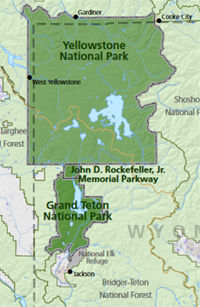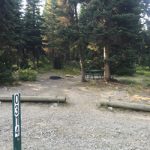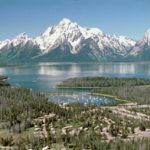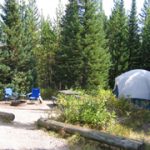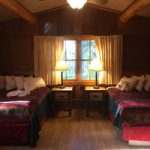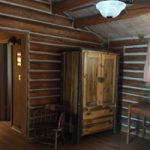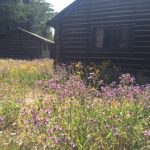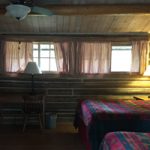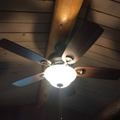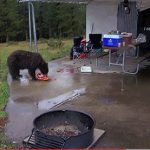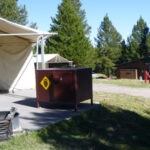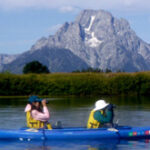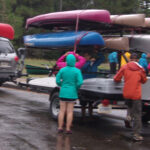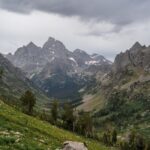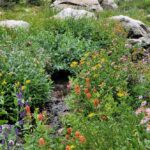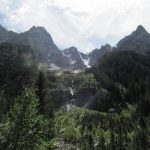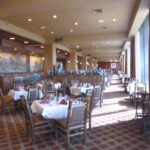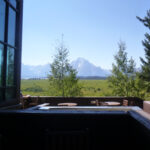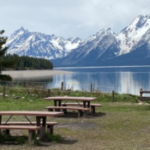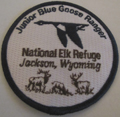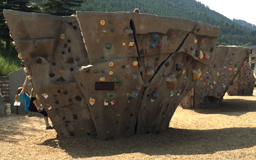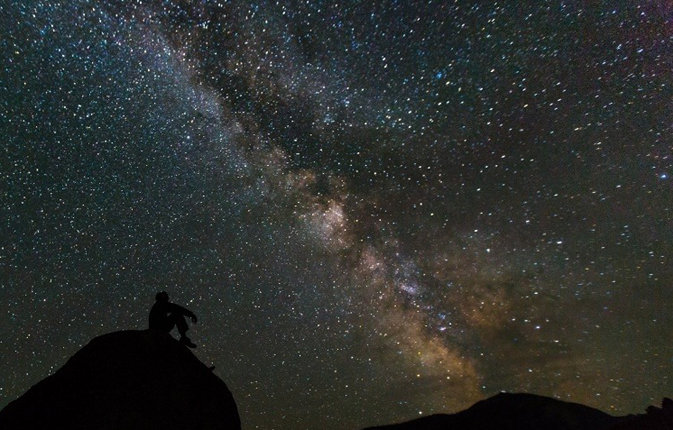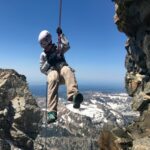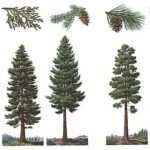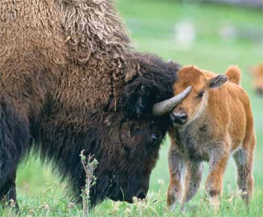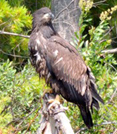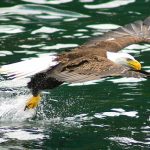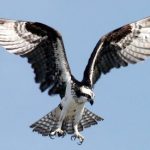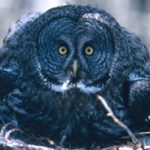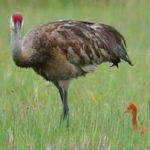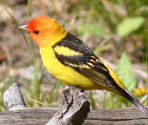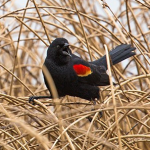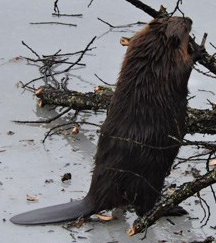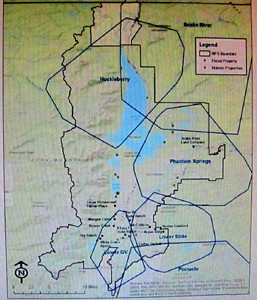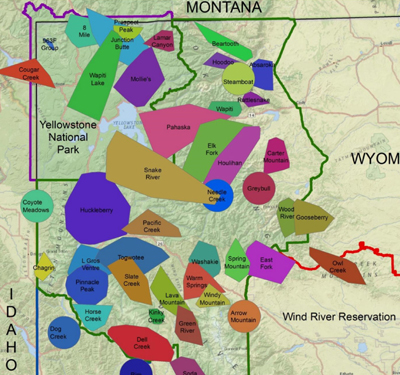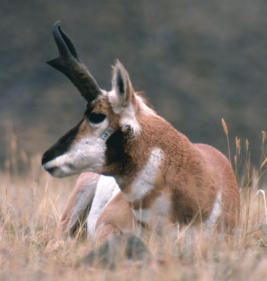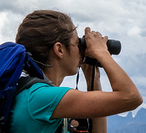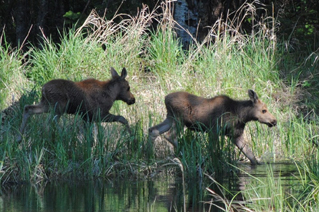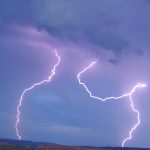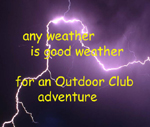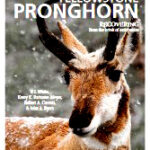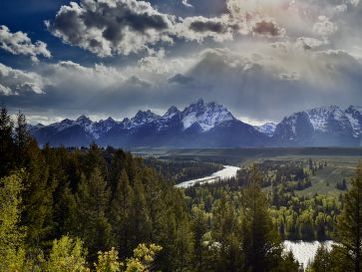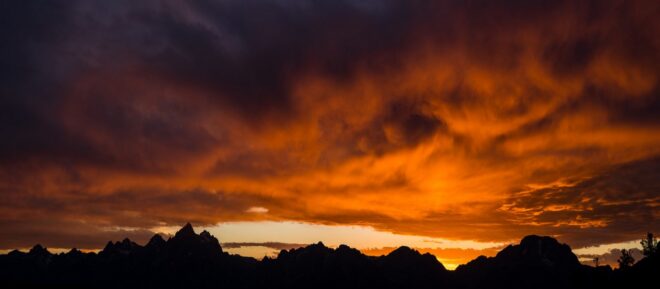
As of August 3, 2025 we are no longer doing trip signups. We will update this page closer to the next adventure in August 2026.
The De Anza College Outdoor Club did
another adventure in Grand Teton National Park
any or all days, August 13 – 31 2025 (between summer and fall quarter).
We are planning another trip August 12 -30, 2026
Participants can stay for a shorter, longer or much longer trip
(that could include ten-national-parks-in-three-weeks
depending on the driving route people take).
Since there is so much to do and we travel so far
(2,500 + miles total round trip mileage),
we always make the official trip dates for a long time, often longer than many people decide to go on the trip.
Some people are already saying they want to stay for the entire August 12 – 30 trip (and maybe even longer). Others may come for only a long weekend.
Students attending De Anza for the first time Fall quarter 2026 can sign up after they are enrolled in a class and go on this August trip before they start classes in September. (But keep in mind that the admissions pages often say “Please allow 7-10 working days for processing your application,” and registration dates ran from July 21-31 2025 ( TBA for 2026) , so you need to be certain to get things done by the deadlines.)
Read on for all the details and links to trip activities, costs, potential overnight accommodations. . .

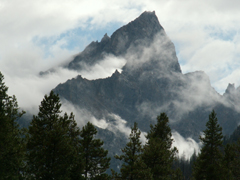
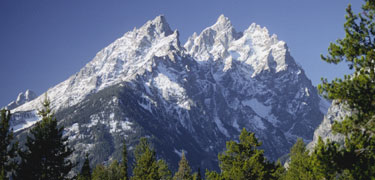
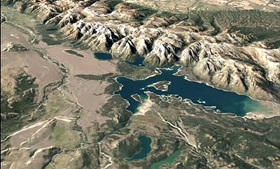
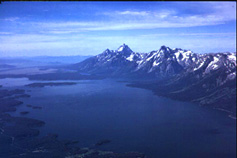


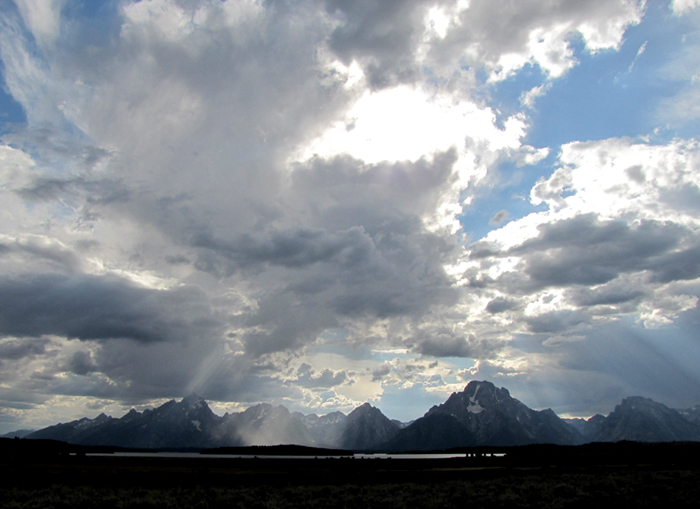
The photos above (4th is a landstat image from NASA, a larger copy of which is at: NASA aerial photo of Teton Range, 1st, 3rd, 6th courtesy of NPS), 7th © E J Peiker http://www.ejphoto.com/grand_teton_page.htm used with permission, 8th is my own,
give you an idea of why the Tetons are so majestic and awe-inspiring.
And why the word magnificent is used so much to describe them.
Sailboat photo below © E J Peiker http://www.ejphoto.com/grand_teton_page.htm
Below note the size
of a sailboat’s sails (with sunset color)
and Jeep with a red canoe on top on the road,
in relation to the peaks in Grand Teton National Park:
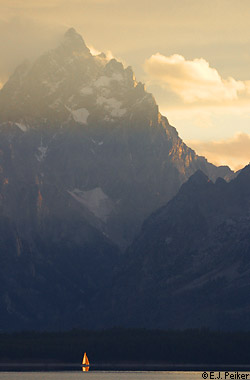
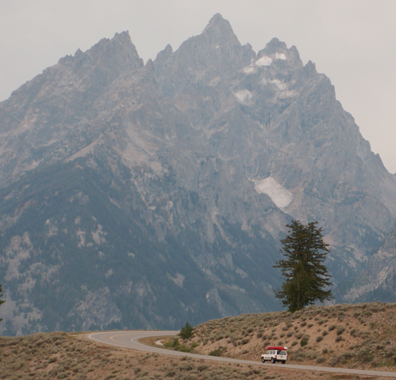
Unlike most mountain ranges, which have foothills, the 40 mile long, 7 to 9 mile wide Grand Teton range is fronted by vast expanses of land then the mountains abruptly rise 3,000 to more than 7,000 feet above the 6,500 to 6,800 feet elevation plain.
On one of the main roads you drive thru sagebrush flats with a full view of the mountain range:

The mountains are rugged and craggy with some snow and over a dozen glaciers and perennial ice fields on top year ’round. There are eight peaks over 12,000 feet in elevation. The highest peaks are: Grand Teton (13,770 feet), Mount Owen (12,928 feet), Middle Teton (12,804 feet) and Mount Moran (12,605 or 12,594 feet, depending on the source).
For a close-to-home comparison, De Anza College sits at 274 feet elevation.
Montebello Ridge above us is at 1,800 to 2,400 feet.
Castle Rock Ridge above Saratoga runs at about 2,800 to 2,500 feet
with Summit Rock and Castle Rock at 3,076 and 3,214 feet above sea level,
and Lick Observatory on the summit of Mount Hamilton, is at 4,209 feet.
As you drive along highway 85 towards Mount Hamilton, imagine mountains more than twice as high, even three times as high as our tallest local foothills.

The edge of the Tetons are dotted with lakes: intimate-easy-to-swim-across-sized like average six to ten feet deep String Lake,

mid-sized lakes like Jenny Lake, (2 miles by 1 1/4 mile, 226 feet deep), or massive lakes like Jackson Lake, almost 14 miles long, 445 feet deep. Along the base of the range there are 7 moranial lakes. Among the peaks and canyons there are over 100 alpine and backcountry lakes and a dozen glaciers to keep some of them quite cold.
This swimmer braved Lake Solitude at 9,000 feet with some snow still along the shoreline in August, mid-way through an all day hike of 14.2 miles / 22.5 km round trip:
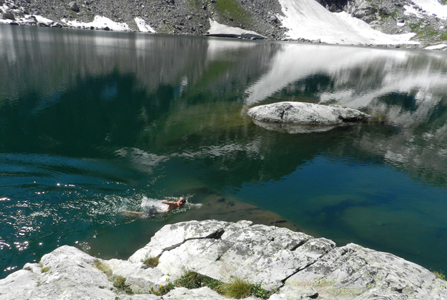
Below, a photo of a visitor center raised relief map. Jackson lake is the biggest one, with Jenny Lake and Leigh Lake to the upper left of it. At the bottom are Two Ocean and Emma Matilda lakes.
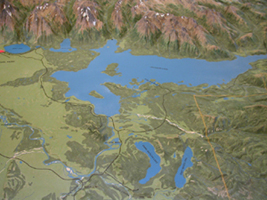

Both Grand Teton National park and Yellowstone National Park are in Wyoming, and people usually visit both as a part of this trip.
We will still wear masks when / where required, and washing our hands regularly has always been a good idea.
On recent Grand Teton trips, all participants were all fully vaccinated because they only wanted fully vaccinated people in their carpools / campsites / cabins and they shared proof of vaccination info with each other.
The club has gone in August/September 2000, 2002, 2004, 2005, 2006, 2007, 2008, 2009, 2010, 2011, 2012, 2013, 2014, 2015, 2016, 2017, 2018, 2021, 2022, 2023, 2024, 2025 and June 2003.
Trip logistics are the choice of each person on the trip, including:
How long you stay (a long weekend, a couple of weeks)
Many people come at the beginning of the official trip, others may join the trip part way through.
Where you stay, – It can be difficult to coordinate timing of activities if we don’t all stay in the same area, so we’ve all stayed at Colter Bay for at least part of the time, or all of the time, on previous trips.
The “Outdoor Club” does not get campsites (or any overnight accommodations),
students on the trip get them and share them as they want to among other De Anza students/staff signed up for the trip.
We hope to do this again for the 2026 trip: 6 months before the 2025 trip, people who went on the 2024 trip and are sure they are going on the 2025 trip, got together at 6:45 a.m. to get campsites for August 13 – depart Aug. 27. They got five campsites in what previous trip participants think is the best campground, Colter Bay, in a tents-only loop (no motorhome generator noise). The loop also is at a slightly higher elevation that we have found has better cell phone reception (we drove around and checked). It is a short walk to the pay showers, laundromat with free reliable wifi, store, restaurants. They got campsites around the outside edge of the loop, with forest behind and fewer nearby neighbors, (certainly not in the center of the loop next to the restroom and dumpster noise, or with a road and traffic noise right behind a site). Three of the sites are right next to each other. People have camped in these previous years and liked them the best.
(If you want to have space in one of these campsites, make arrangements when you come to sign up for the trip.)
Close to the start of the adventure, some of the days and some of the campsites will be cancelled if they are not needed.
The campsites ( 2025) are $66.08 per night. They can accommodate up to 6 people and up to two vehicles each. This means that depending on how they are shared, they will cost between $11.02 and $33.04 per person, per night. For example, two people might decide that they do not want to try to share the space for food storage in a bearbox, so the two of them take over the cost of one campsite for themselves, which will be $33.04 per person, per night. If a large van transports 6 campers, or two vehicles with three campers in each share a campsite, that will be $11.02 per person, per night.
Part of the decision making about how many people share a campsite includes sharing space in the bear-proof-if-you-use-it-correctly food storage box at the campsite. Some people have previously decided to have only four people in a site instead of the maximum six so they each have more space. See details and pictures at: using a campsite food storage locker.


Colter Bay cabin,
People usually share some of the two bedroom, one bath cabins. One year, two people shared by each having one of the bedrooms. They paid more per person than eight other people who shared the two bedrooms in another cabin. These costs, and more pictures of the cabins, are at: Colter Bay cabin,
A Colter Bay Tent Cabin is lower cost than the cabins.
(On the left above, the bear dining on watermelon that people did not store properly was NOT from one of OUR trips.)
or you might choose other hotels and hotel suites, some with a fabulous view, fireplace, fridge, etc, (but note that people on our Grand Teton trips rarely share the more expensive accommodations).
How you get to Grand Teton National Park,
is also up to you, and is not determined by the club or the college.
Carpools are arranged by individual students, not by the club or the college.
(You can fly all the way,
or get a cheap plane ticket to fly part way and then rent a car and drive the last 6 hours,
or get a cheap plane ticket to fly part way and then take a bus,
or drive by yourself or in a small or huge carpool)
Driving directions and options for flying and other public transportation are at Grand Tetons trip transportation.
Below, the driving route (recommended by previous trip participants)
across California, Nevada, part of Idaho and into Wyoming. (Many trip members have done the drive with one overnight stop in Elko, Nevada and have recommendations for where to stay that we will share with people as they sign up for the trip.)
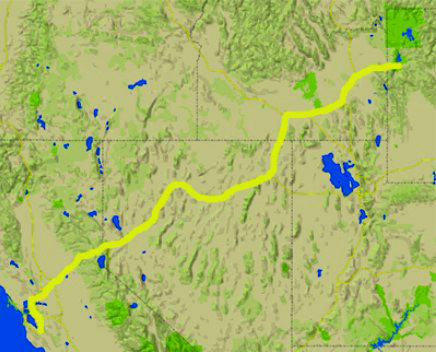
– – – – – – – – – – – – – – – – – – – – – – – – – – – – – – – – – – – – – – – – – – – – – – – – – – – – – – – – – –
We recommend some things to do in advance
(some of them should be done well in advance)
Trip activities include:
(people can join us for just one planned activity, or if they have the time, everything we do)
We will have three, four, or five or … official kayaking and canoeing mornings/days suitable for beginners.
(Weather could cancel or postpone some kayaking as we do not risk kayaking during thunderstorms.)
Kayaking will probably start with a paddling lesson and brief outing on Colter Bay, just down the road from the campsites and cabins and Tent Cabin Village
Colter Bay is flat water with little current and is a good way for people with no kayaking experience
(such as our usually May and October Baylands kayaking trip)
to get a first experience. OR if Colter Bay has a low water level, we have alternate places to go.
We also plan near sunrise kayaking on Oxbow Bend,
on another day on String Lake with an early start
and on another day, a five mile stretch of the Snake River from Jackson Lake Dam / Cattleman’s Bridge could come next.
And then we sometimes repeat these kayaking excursions.
See Grand Tetons trip kayaking for details about and photos of each of our kayaking locations.
We plan to do a short to quite long (your choice of distance) hike into Cascade Canyon.
People usually budget for a ride on the hiker shuttle boat across Jenny Lake for the half day or all day Cascade Canyon hike, on a day picked by the group. ($20 per adult according to their website in early 2025). (The boat shuttle takes four miles off the round trip hike, allowing people to hike farther into the mountains.) Day to be chosen once we are in the park and at least a bit acclimated to the altitude and the weather is okay.
People have often decided to do an overnight backpack of their own into Cascade Canyon after doing it as a day hike.
People can choose other hikes, with or without a Ranger Naturalist, to the many canyons and lakes. For example:
“Lakeshore Stroll – Daily at 8:30 a.m. (6/10-9/11, 2025) 2 hours – 2 miles – easy hike. Meet at the flagpole in front of Colter Bay Visitor Center. Take a stroll with a Ranger along Jackson Lake while learning about this remarkable place. Beauty is guaranteed. This loop is inviting for the whole family.”
“Taggart Lake Hike – Daily at 8:30 a.m. (6/10/2025 – 9/1/2025) 2.5 hours-3 miles- 1.5 miles guided. moderate hike – meet at Taggart lake Trailhead. Hike with a ranger along the scenic trail to Taggart Lake, where a variety of stories can unfold. Limited parking, arrive early.”
“Evening hike to Phelps Lake – reservations required: 1 (307) 739 -3654 Daily at 5:30p.m. ( 6/12/2025 – 9/1/2025) 2.5 hours -3 miles – 1.5 miles guided – easy hike – meet at the Laurance S. Rockefeller Reserve Center Porch. Explore the meaningful connections of people and nature on this ranger guided hike. Bring water, snacks and insect repellent.”
People usually do some or a lot of sightseeing.
The sightseeing page has Grand Teton National Park touring resources,
links to audio descriptions of historic waysides/buildings,
a historic properties driving tour,
maps and descriptions of the stops you can make on the two main roads in the park between Moose Junction and Jackson Lake Junction
and the Moose-Wilson road that comes in to Moose from the Granite entrance station to the Moose entrance station,
as well as descriptions of visitor centers we always see.

We know the best places to look for elk early in the morning and where a pair of bald eagles usually nest (and when we bring people to these locations we make certain they don’t disturb the animals).
People often have meals (picnic, cookout or restaurants) together.
See: Grand Teton National Park restaurants with links to menus of restaurants in the park, some of which are pictured below:
(and there are links to info about restaurants in nearest main town of Jackson, Wyoming.)
Most meals on these trips have been picnic or cookouts, but on each trip most people have eaten out at least a breakfast, and sometimes dinner(s) at a restaurant together.
We sometimes end the day with a dinner picnic at a pond we know of to watch a beaver family that comes out in the evening,
or bring takeout sandwiches/burgers/pizza to (or cook-out at) the picnic area
at the beach down the road from the cabins / campground most of us stay at.
We have set aside time almost every year to go to Lunch Tree Hill for sunset dinner and stargazing after. Some nights there will be no moon out for quite awhile after sunset.

Check out the sunset photos at Lunch Tree Hill.
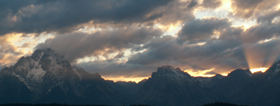
Restaurants in Grand Teton National Park are non-smoking, many others in Wyoming and Montana allow smoking. The Outdoor Club does not allow smoking in or near trip campsites, cabins or activities.
There are dozens of restaurants in the town of Jackson. They vary from burgers, Chinese, Mexican, sushi, pasta, Italian, steakhouse to four-stars with “an award-winning wine list”. Most lean towards family or casual atmosphere.
But plan for adequate time to get to Jackson for dinner . . .
The drive from Colter Bay to the edge of Jackson is about 42 miles.
A climbing school warns its customers:
“It is very important that you arrive on time, so please allow enough time for travel from wherever you are staying. Speed limits in the Park are low to protect wildlife and visitors, and rangers ticket offenders regularly. We want your entire experience here to be positive, so please do not speed.”
Many people on the trip work towards getting their park Young Naturalist or Junior Ranger certification and go to Ranger programs together.

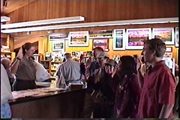
We have previously taken a short excursion on a sailboat
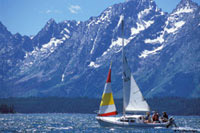
and in 2015 on a deck boat on Jackson Lake. In the picture below the girls jumped off the deck boat into Jackson Lake and swam, and encouraged the guys to join them (but they didn’t).
If we do this year it will be subject to availability, date and time to be decided when we know who/when is going and what budget they have.
When will we schedule each of these activities?
We won’t schedule the exact date(s)/time of most things well in advance, it usually turns out that we decide as we go along, often the day before an activity. We can’t paddle or swim during thunderstorms so we watch the weather report and aim for morning(s) with little or no lightning activity forecast. (In 2022 we had 2 weeks of afternoon or early evening thunderstorms followed by a week and a half of no rain at all.) We do kayaking/canoeing together, but people don’t all do the same things together each day, sometimes they plan 2 different hikes of different distances. People often decide at the spur of the moment that they want to whitewater raft or go to the rodeo (and then shop for groceries at the big stores in town) and others might want to spend that day in Yellowstone Park or or do a horseback trail ride. Some activities turn out to be strenuous and people just want the next day off to sightsee, find a great restaurant in town (or go to the laundromat with reliable wifi conveniently located near the campsites and cabins).
A previous trip participant wrote me a thankyou email:
“Thank you for the entire Teton trip.
I have never done so many activities in such a short amount of time in my life.”
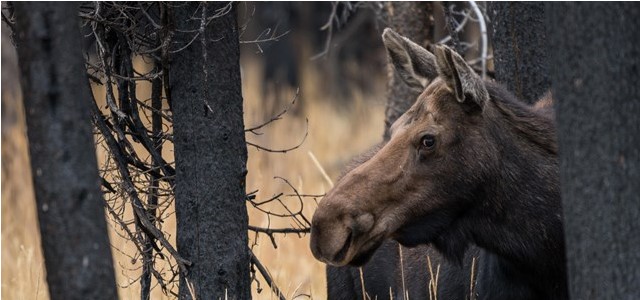
Even on a short trip you can expect to see elk and bison, (often moose) especially if you are out early. Fall trips have more chances to see animals than in the summer. The moose calves will be about 2 1/2 months old, the elk calves about 3 to 3 1/2 months old and the cows (mothers) will not be hiding them as much.
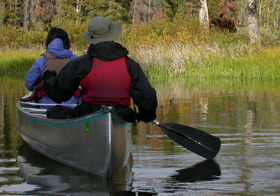
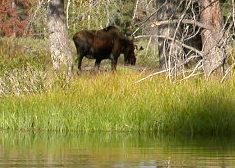
It will be the start of elk mating season and the bulls may be bugling and gathering harems.

If you are lucky and spend enough time in the park you may see Bald Eagles, Osprey, Sandhill Cranes, otters, muskrats, beavers, black bears, grizzlies and see or at least hear coyotes and wolves. More details about flora and fauna are below.
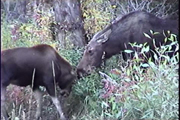
Was that a wolf or a coyote or a fox? An elk or a moose?
 Rocky Mountain mammal size comparisons
Rocky Mountain mammal size comparisons 
Rocky Mountain mammal size comparisons has photos and comparisons of beavers, squirrels, pika, marmot, elk, moose, bison, fox, coyote, wolf, golden-mantled ground squirrel, chipmunk, Red Squirrel (also known as) Chickaree, Unita Ground squirrels, bobcat, lynx, mountain lion (cougar), pine marten, mountain goats, bighorn sheep, pronghorn, grizzly and black bears, tundra swan, trumpeter swan, adult and juvenile Bald Eagles.
De Anza owns ten tandem (two-person) kayaks. These are not the kind of kayaks with spray skirts that your legs are stuck in, they are more like small canoes. The total number of people who can sign up for this trip and expect to kayak regularly is 20 unless we take turns or rent extra boats.
Some could bring their own craft. (The club would like students who will bring their own craft to sign up with us and do proper Risk Management paperwork even though they are not using De Anza owned kayaks. There are how-to pictures at: loading a kayak on a car.)
If all goes as planned, the kayaks/paddles/lifejackets/drybags will be transported to the park. (2025 canoe or kayak rentals: $55 to $85+ for 24 hours, or as much as $40 an hour. If we kayak on and off for only a week we save $100 to $200 or more per boat, even with the required permit fees.) We also usually bring a canoe so people can learn to paddle both boats.
Our typical day
with an early morning kayak starts by getting up early enough to really see lots of animals. By the afternoon moose and elk are usually napping somewhere cool and hidden. Getting up early can be 5 a.m. or even earlier if we want to see the sunrise. We eat a little (juice, power bar, fruit), get coffee into people who can’t function without it and try be on the road quickly, getting to


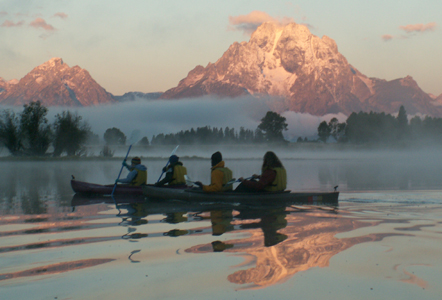
Oxbow Bend and launching shortly after, often paddling into the mist. We spend so much time out watching ducks, birds and animals we usually miss the last of breakfast seatings at the fancy buffet at Jackson Lake Lodge (until 9:30) and end up eating at the Colter Bay Ranch House, or missing breakfast altogether. Then we finally get a shower and sometimes a nap to make up for lack of sleep the night before, or we start on mid-day activities.
If you want to go kayaking or canoeing with us on this trip you MUST read Grand Tetons kayaking . The page has lots of pictures of the animals we have seen.
Mid-day
 it’s Ranger walks, museums, hikes (we will skip the early morning kayaking on the day of the all day Cascade Canyon hike Cascade Canyon, Grand Teton National Park), other driving and/or kayak tours.
it’s Ranger walks, museums, hikes (we will skip the early morning kayaking on the day of the all day Cascade Canyon hike Cascade Canyon, Grand Teton National Park), other driving and/or kayak tours.
For your safety hiking, the Rangers warn “… Always carry bear spray and know how to use it…
solo hiking and off trail hiking is not recommended,
a considerable number of rescues involve solo parties that were unable to self rescue and remained alone in the wilderness, sometimes with life-threatening injuries, until rescuers could locate them.” – We never hike or backpack alone.
Trip cost includes part of the cost of the bear spray, which is required for everyone to carry. Each trip member is required to attend a ranger program on safe bear spray use and read about bear spray before they go hiking, biking, kayaking or even walking away from developed areas. The ranger programs are offered every day at at least one Grand Teton National Park visitor center. And you must read: Your safety in grizzly bear territory
Please watch this video provided by Yellowstone park:
In a dozen years of club trips no one has had to use (spray) any bear spray.
(For our trips to Grand Teton National Park, you do not need to have bear spray on you while in town, and if you do have it on your person, while shopping for example, the many stores (Albertsons, Target, Ace Hardware, REI and more) in Jackson that sell bear spray might think you took it off a store shelf.)
We usually plan to bring trail snacks/picnic food rather than take the time to go to restaurants for lunch, but the burgers, sandwiches and multiple varieties of fries at the take-out window at Jackson Lake Lodge sometimes call to people.
Each year people have planned time to make a half day or longer caravan trip around the main park loop road for general sightseeing, again, sometimes with a quite early start to be able to see more animals. Pictures and info about visitor centers, Cunningham Cabin, Menor’s Ferry, Chapel of the Transfiguration, Signal Mountain summit road, Colter Bay Indian Arts Museum, and Mormon Row are at: Grand Tetons sightseeing At Menors Ferry, there is often a tour, for example: “A Walk into the Past- daily at 2:30 p.m. (6/10/2025 – 9/1/2025) 45 minutes, 0.25 miles easy walk- Meet at the Menors Ferry General Store. Take a walk back in time at the Menors Ferry historic district and see what life was like for valley residents in the 1890s and early 1900s.”
Parts of previous groups have done activities that are not an official club “event,” including:
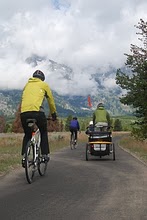
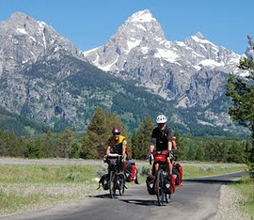
gone bike riding either by renting bikes for the day or by bringing them from home. (and yes, all trip participants, of any age, must wear a helmet even though bike riding would not be an official club “event,”) People who were preparing for a triathlon after the trip or who just wanted a safe running workout, used the paved bike pathways (not right on the highway where drivers are looking at the scenery, not noticing you on your bike).
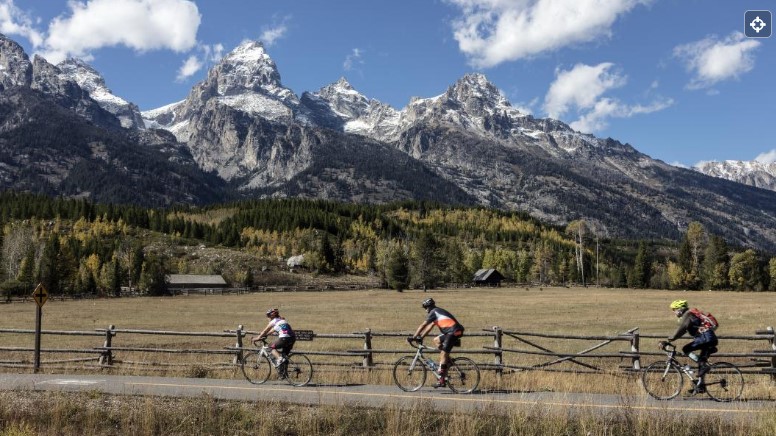


and Horseback riding: In the fall the corral at Colter Bay sometimes closes before we are there, Jackson Lake Lodge is often open longer and you can take a horseback trail ride:
1 307 (543-3100) from their website in 2025:
price range $70 to $103 adult
(Approx. 1 hr), (Approx. 2 hrs)
Each of the rides at Colter Bay and Jackson Lake Lodge (and Headwaters at Flagg Ranch) go to different locations, with different views along the way, so you could take many trail rides and see more locations/views. (And go on different trail rides in Yellowstone Park.
Rules have included:
“Riders must weigh no more than 225 pounds. Riders must wear shoes that are closed-toed and cover the entire foot. Guest wearing sandals will not be permitted to ride. Rider information (height, weight, age and experience level) for each participant is required at the time of booking. Please have this information ready. For safety reasons, riders must speak and understand English fluently. For rider safety, backpacks, binoculars, and video cameras are not permitted. Saddlebags are provided for small items.”
Long pants have been recommended. Recommend you apply sunscreen and insect repellent PRIOR to the ride. Suggest you carefully read all their current rules in advance.
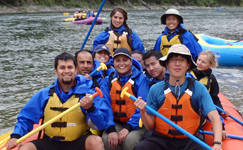 On the 2011/2012/2023 trips there were enough people who wanted to go white-water rafting that they reserved their own raft from a guide company and did not have to share with strangers. See also: Grand Tetons whitewater rafting. (2025 approx. $115 / $130 (add about $30 with a meal included), quotes for a private boat 4 – 8 passengers $920 to $1,100.)
On the 2011/2012/2023 trips there were enough people who wanted to go white-water rafting that they reserved their own raft from a guide company and did not have to share with strangers. See also: Grand Tetons whitewater rafting. (2025 approx. $115 / $130 (add about $30 with a meal included), quotes for a private boat 4 – 8 passengers $920 to $1,100.)
Experienced surfers could bring their surfboard, when we go in early summer, there are sections of the Snake River (from West Table to Sheep Gulch, especially Taco Hole and Lunch Counter, or search for King’s Wave just north of Astoria) you can surf in place on a rapid for as long as your legs hold out (or until a raft needs to go through or someone else wants to take a turn). Some really are only for experienced surfers, (some of whom will tell you they thought they were going to drown the first time they tried it in early season), and the wash out below the rapids can have serious rapids/large boulders as well. Much of the surf potential depends on how much water the Bureau of Reclamation releases from Jackson Lake Dam, and the best ‘season’ for this surfing is early summer, sometimes into July.
A local wrote: ” . . . Besides the innate challenge of battling Lunch Counter’s converging currents, surfers also need to give right-of-way to boaters coming through. It’s a test of skills that sometimes results in a wipeout and a hard swim to an eddy. . . ”
You know without asking this is not a college-sponsored event.
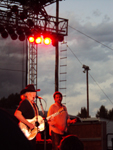 In 2010 some of the group went to an outdoor concert with Willie Nelson.
In 2010 some of the group went to an outdoor concert with Willie Nelson.
Most years, free concerts are offered every Sunday at 5 p.m. at Teton Village.
http://concertsoncommons.com/


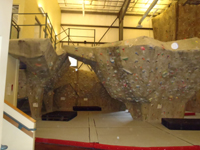 these are pictures from a previous commercial climbing gym in town, a tempting place to spend a rainy day. The Recreation Center at 155 East Gill Avenue.
these are pictures from a previous commercial climbing gym in town, a tempting place to spend a rainy day. The Recreation Center at 155 East Gill Avenue.
has a climbing gym,
https://www.tetoncountywy.gov/2763/Climbing
(Fees higher for non-residents, lower for seniors.)
Phil Baux Park, at 10 E Snow King and S Cache, Jackson, Wyoming (at the base of Snow King Mountain) has artificial climbing boulders, (is one of them still the world’s largest artificial boulder?), open to the public for free (except when booked by a group) with built-in hand/foot holds.The main adult sized is 30 feet long at the base and 40 feet wide at the 12 foot high top. Another is kid sized. The park foam footprint was made of preconsumer recycled material. You know without asking that climbing is not a college-sponsored event.

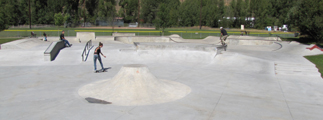 14,000 square feet Teton Co./Jackson skatepark, with four grind bays of varying difficulty (hey, bring a helmet/knee and elbow pads and wrist protection) is off Gregory. Take High School Road on the left off Highways 89/191 as they come into town from the south, then turn right on Gregory and between where Berger and Martin come in from the right, make a left on more of a driveway than a road to the skatepark. Print yourself a Google map of 1374 Gregory Ln, Jackson. Hours 8 a.m. to dark when we were last there. (Grand Teton National Park only allows skateboards, roller blades, skates in a few areas like developed campgrounds and the bike pathway.) Also not a college-sponsored event.
14,000 square feet Teton Co./Jackson skatepark, with four grind bays of varying difficulty (hey, bring a helmet/knee and elbow pads and wrist protection) is off Gregory. Take High School Road on the left off Highways 89/191 as they come into town from the south, then turn right on Gregory and between where Berger and Martin come in from the right, make a left on more of a driveway than a road to the skatepark. Print yourself a Google map of 1374 Gregory Ln, Jackson. Hours 8 a.m. to dark when we were last there. (Grand Teton National Park only allows skateboards, roller blades, skates in a few areas like developed campgrounds and the bike pathway.) Also not a college-sponsored event.

Get your fishing license at the Wyoming State Information Center as you drive through Jackson Hole, Wyoming on the way to the park or get it at the Colter Bay marina. Non-resident fishing licenses have been offered for various amounts of time: daily, 5 consecutive day and 12 month.
Look for Grand Teton National Park fishing regulations, including legal tackle, creel and size limits and much more at
https://www.nps.gov/grte/planyourvisit/fish.htm
and see Yellowstone National Park fishing regulations: https://www.nps.gov/yell/planyourvisit/upload/2025-Fishing-Regulations.pdf
A fishing guide service offered this advice: popular summer flies:
Dry Flies: Parachute Adams, Split Flag Adams, Guide Chute, Film Critic, PMDs, Blue Wing Olives, Mahogany Duns, Purple Haze
Foam: Chubby Chernobyl, Water Walker, Purple Bruces, Circus Peanut, Morrish Hopper, Skwala, Grand Hoppers
Nymphs: Pat’s Rubber Legs, Copper Johns, Perdigons, Duracell’s, Pheasant Tail, Psycho Princes
– – – – – – – – – – – – – – – – – – – – – – – – – – – – – – – – – – – – – – – – – –
Evenings there are ranger programs at many locations, including
“Colter Bay evening talk with a ranger, Sunday-Friday at 8 p.m. ( 6/10/2025 – 9/1/2025 Meet at the Colter Bay amphitheater (auditorium if inclement weather).” Different topics, often posted in advance at the visitor center.
Here are more sunsets:

NPS photo below of a fiery Teton sunset on Jackson Lake by Jackie Skaggs, who said the 1976 sunset lasted almost 30 minutes at this intensity.
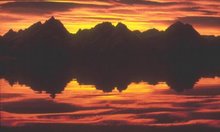
For the 2026 trip (mountain daylight time) civil twilight (when the sky starts to get light) will begin at about 5:53 to 6:15 each morning, with sunrise from 6:24 to 6:44.
Sunset will be between 8:32 and 8:03. Moonrise and set is different each day.
There will be no moon on August 12, 2026 and a full moon on Aug. 27, 2026
There will be quite a few nights when the moon rises hours after sunset, or sets before midnight, giving us a dark sky for great stargazing.
In 2026 we will be able to enjoy the Perseid meteor showers (mid July through August )
hundreds of shooting stars an hour, velocity of 37 miles (59 km) per second – the most shooting stars of the year, are “colorful, with frequent persistent trains.”
The peak nights for the Perseid meteor showers, according to various sources, are August 12 – 13, 2026, but we have enjoyed them almost every night of previous trips after the moon sets.
I found a website that said that for Aug 12, in the past (since 2000), Jackson, Wyoming was cloudy 24% of the time.
(NASA says the Persieds are usually active to some extent mid July to late August.)
below, a streak during the Perseid meteor shower:
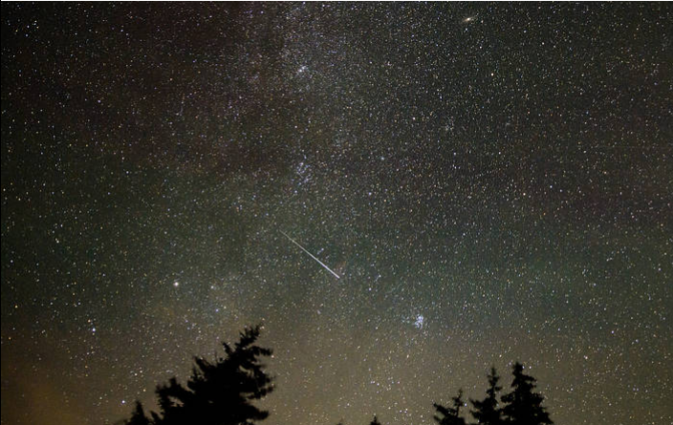
and a time lapse of many Perseid meteor shower streaks:
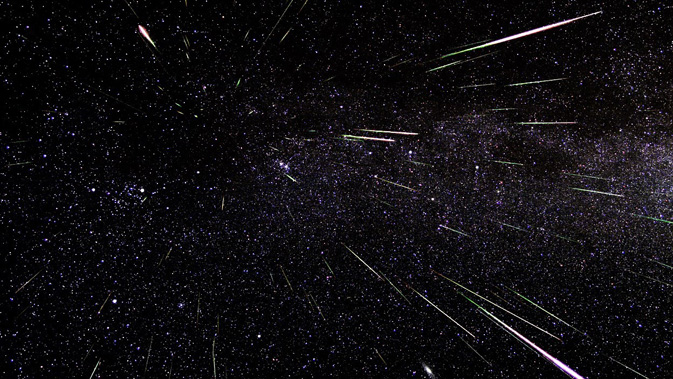
(For many people on this trip it is the first time they have seen the Milky Way.) National Geographic says: “the Milky Way contains the same amount of mass as 700 billion suns.”
Stargazing is so much better than in the city and the Milky Way is in full view on the mostly uncloudy nights. Or we occasionally enjoy a full blast thunder/lightning storm (or maybe a little bit of snow).
As Jack Turner said in The Abstract Wild,
“At night the stars shine like crystal rivets in the blue-black sky”.
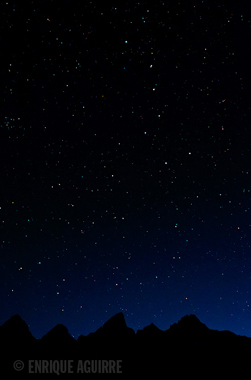
photo above with the Big Dipper by Enrique Aguirre used with his permission. http://www.enriqueaguirre.com
When we are lucky with timing and weather, the full moon setting behind the Grand Teton mountain range just before sunrise is well worth getting up early for:
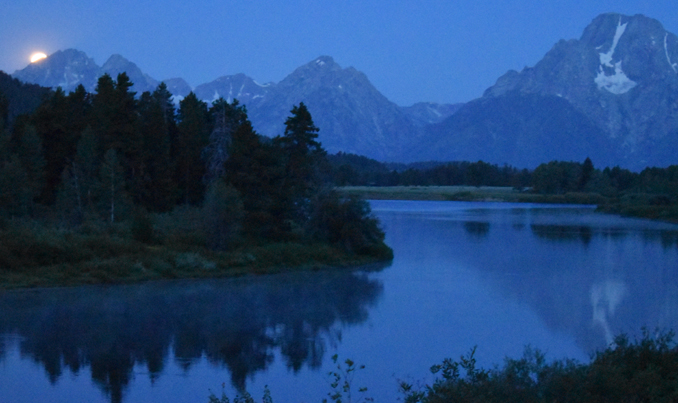
Photo from the 2024 trip by Thuy Tien Nguyen:
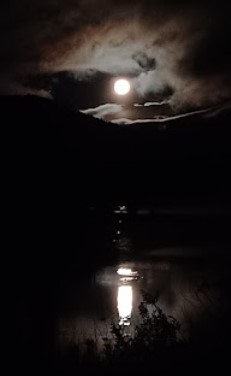
More potential, optional activities that are not all official club events:
Yellowstone National Park, with Old Faithful Geyser, is just north of Grand Teton National Park.
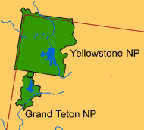

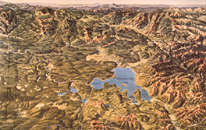
![]()
Since your trip can start and end when people traveling together mutually want it to, you could add in an overnight visit in Yellowstone. Info about the hotels and cabins in Yellowstone is at:
http://www.ynp-lodges.com/ Campgrounds usually do not all fill during the fall season.
Most previous trip members have at least done a one or two day sightseeing drive into Yellowstone. The south border of Yellowstone is only 8 miles from the north border of Grand Teton. It’s 56 miles from Colter Bay to Old Faithful.
Old Faithful in Yellowstone erupts on the average every 60 to 110 minutes, for 1 1/2 to 5 minutes, with an average height of 130 feet. Scroll down at https://www.nps.gov/yell/learn/nature/hydrothermal-features.htm for the next eruption prediction. “The famous geyser currently erupts around 17 times a day and can be predicted with a 90 percent confidence rate within a 10 minute variation.” Our favorite memory of an Old Faithful eruption was at night with light from a full moon and lightning from a thunderstorm in the background.
Please note that “swimming or soaking in hot springs is prohibited. More than 20 people have died from burns suffered after they entered or fell into Yellowstone’s hot springs.”
I put lots of links to Yellowstone info at Yellowstone , including a link to a mini-video of an elk redoing the paint job on a Cadillac that you should watch.

In summer many Grand Teton elk migrate into Yellowstone, the biggest free-ranging herds of bison are in Yellowstone and the most wolves.
As of January 2020, there are at least 94 wolves in Yellowstone park. Eight packs were noted. And see further down on this page for Grand Teton park wolves.
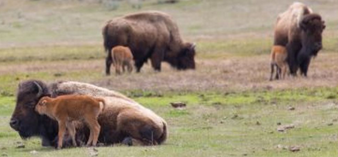 October 2017 “the bison population in Yellowstone National Park measured around 4,800 head, down from the estimated 5,500 bison present in Yellowstone around this time in 2016.” A July 2012 report said “almost between 2000-4000 bison live in Yellowstone National Park, and almost 1000 bison reside in Grand Teton National Park.”
October 2017 “the bison population in Yellowstone National Park measured around 4,800 head, down from the estimated 5,500 bison present in Yellowstone around this time in 2016.” A July 2012 report said “almost between 2000-4000 bison live in Yellowstone National Park, and almost 1000 bison reside in Grand Teton National Park.”
1,000 bison were counted in the Teton winter range in 2007, 840 in the winter range 2012, 484 in the winter range 2019.
Yellowstone 2009 late winter estimate of 96-98 wolves, 3,000 bison, 6,000+ elk. August 2012 saw a Yellowstone bison estimation of 4,230 including 600 calves born that year. In 2004, 719 bison in the Jackson herd, over 4,000 in Yellowstone.
Parts of Yellowstone can be a bit more crowded than Grand Teton. A NPS photo of a crowd dispersing at Old Faithful: 
Yellowstone safety basics really worth reading:
https://www.nps.gov/yell/planyourvisit/safety.htm
Don’t be one of the people who puts their fingers in the boiling pools in Yellowstone
to see if the water really is that hot.
Every year people are badly burned when they fall into thermal features in Yellowstone. Most of this is due to not staying on the boardwalks, (including intentionally walking out on thermal features, which can get you a $1,000 fine) or playing/running on the board walks. A park news release said: “Yellowstone park visitors are reminded that for their own safety it is important to stay on boardwalks and designated trails while viewing all thermal features in the park. Scalding water underlies thin, breakable crusts; many geyser eruptions are unpredictable, and many thermal features are near or above boiling temperatures. Boardwalks and trails help protect park visitors and prevent damage to delicate formations.”

read details at:
Please don’t be tempted to swim in hot springs. Thermal waters can harbor organisms that can cause fatal meningitis or Legionnaire’s.


Backpacking will not be an official part of this trip, but you could get a permit for a backpack adventure if you plan ahead and bring appropriate gear. A few details about permits, etc. are at Grand Tetons backpacking. People have often booked a Cascade Canyon or Leigh Lake backcountry campsite for a small group to go backpacking (not as an official club event).
Below, a photo of Jenny Lake, Leigh Lake and part of Jackson Lake. Our favorite overnight wilderness campsite is on the left hand side of the lake in the middle, Leigh Lake.
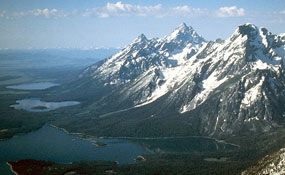
(Looking at visitor stats for the last decade we find that only slightly over 1% of the total recreation visits to Grand Teton National Park involved back country camping.)
2023, most of the group did a short backpack followed a few days later by a longer one.
On the longer one, the backpackers camped near and hiked past masses of wildflowers in perfect bloom at the Cascade Canyon higher elevation in August:

The trail sign in the photo below says: Paintbrush Divide 10,200 feet elevation.
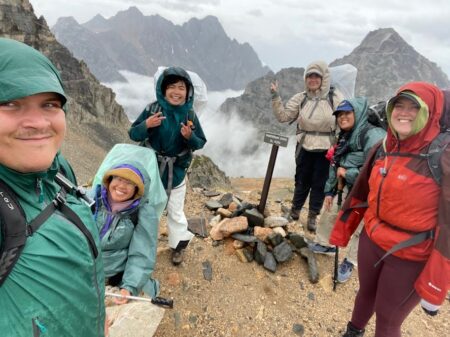
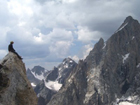 Tempted to climb a peak or two? Mountain climbing is not an official part of the trip, but here are a couple of links:
Tempted to climb a peak or two? Mountain climbing is not an official part of the trip, but here are a couple of links:
Commercial Climbing Guides
Exum Mountain Guides (307) 733-2297 http://www.exumguides.com/
Jackson Hole Mountain Guides (307) 733-4979 http://www.jhmg.com/
Each of the local climbing guide companies will require that you do a lesson or two with them before any peak bagging to prove that you are capable. They also give advice, for example about the Grand Teton climb:
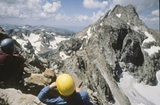 “Climbers should be in good physical condition before attempting this climb. We recommend scheduling some days of hiking in the Tetons to acclimate to the altitude. You may take the schools and make the climb on consecutive days, or even better, insert a day after the schools to rest and hydrate.”
“Climbers should be in good physical condition before attempting this climb. We recommend scheduling some days of hiking in the Tetons to acclimate to the altitude. You may take the schools and make the climb on consecutive days, or even better, insert a day after the schools to rest and hydrate.”
“Altitude: the high elevations in the Tetons have stopped otherwise fit people who didn’t take the time to acclimate. We strongly encourage our participants, especially those coming from sea level, to arrive a few days early in Jackson…To help one’s body adjust to the thinner and drier air, first of all HYDRATE. Exertion at altitude demands hydration. Drinking enough water markedly improves athletic performance and helps to prevent altitude mountain sickness. Before and during your climb, aim for 4-5 quarts of fluid a day…In the days before your Grand Teton ascent, assist the acclimation process by going to some higher elevations, above 9000 feet, and get some moderate exercise…Some people simply acclimatize more slowly; they often find that allotting a few extra days to acclimate is helpful for performance.”
The advice above for climbs to 10,000 or even 13,000 plus feet also applies to our stay. We are mostly staying at 6,800 feet elevation. On hikes we can go much higher (up to 9,000 feet in Cascade Canyon). You will probably feel out of breath at first and may even get a headache and lose appetite. You can get more sunburned at higher altitudes. Read At altitude for advice. It includes why your tent mate might seem to stop breathing.
– – – – – – – – – – – – – – – – – – – – – – – – – – – – – – – – – – –
The Jackson Farmers Market, on the town square, Center and Deloney Streets, see an aerial photo at:
https://www.jacksonholefarmersmarket.org/
is Saturdays, 8am – 12pm (noon), June 28-Sept. 27, 2025
Art gallery tours
There are 35+ galleries in town that you can visit on your own or
if you stay after the usual dates of our fall trips you can attend the Jackson Hole Fall Arts Festival with a tour of galleries. (September 5-14, 2025)
https://www.jacksonholechamber.com/fall-arts-festival/
When we have taken a “tour” of galleries on our own, it was more fun than the local (fee) museum our group was disappointed with on the 2007 trip.
A map of Art Galleries in Jackson is at:
https://jacksonholegalleryassociation.com/map
It includes nature photographer Thomas Mangelsen: https://www.mangelsen.com/jackson
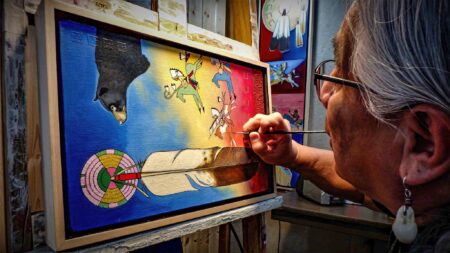
May 20 – Sept. 8, 2024 American Indian Guest Artist Summer Schedule
The NPS said:
“Each summer, Grand Teton National Park hosts Indigenous artists at the Colter Bay Visitor Center to share their traditional and contemporary art with park visitors.” “Visitors are invited to learn about Indigenous cultures through demonstrations where participating artists share the cultural traditions of their tribes through painting, weaving, pottery, beadwork, musical instruments, and more. Artists will offer their finished items for purchase. The Indigenous Arts and Cultural Demonstration Program is available when the Colter Bay Visitor Center is open.
Most Saturday nights at 7 p.m. throughout the summer, visiting artists will offer live performances and talks at the Colter Bay Amphitheater, available to the public.
https://www.nps.gov/grte/planyourvisit/iacdp.htm
– – – – – – – – – – – – – – – – – – – – – – – – – – – – – – – – – – –
The Jackson Center for the Arts (dancer’s workshops, recitals, theatre company, art exhibits, touring ballet/bands/choir/dancers/guitarists/pianists/blues/blues rock/funk/jazz/western swing/bluegrass/cowboy balladeer/hootennany/puppeteer) is at 265 S Cache, 2 blocks south of the town square. http://www.jhcenterforthearts.org/
Grand Teton Music Festival 2025 Season: July 3-August 23 (in Teton Village)
In Pinedale, Wyoming: http://museumofthemountainman.com
In Jackson: http://www.jacksonholehistory.org
dates/times change from year to year, but have been
Tuesday – Saturday
10 am – 5 pm
In Dubois: http://www.bighorn.org
– – – – – – – – – – – – – – – – – – – – – – – – – – – – – – – – – – –
Jackson Hole Rodeo usually starts at 8 pm. gates open 6:30.
Rodeos (rain or shine) have been Wednesdays and Saturdays from Memorial Day weekend through Labor Day excluding fair week (end of July), with additional rodeos every Friday in July and August. Team roping, barrel racing, bullriding, calf roping, bareback riding, saddle bronc riding.
http://jhrodeo.com/ has detailed descriptions of each rodeo event.
Jackson Hole Rodeo
Old Bill’s Fun Run (fundraiser for local charities, including the Red Cross, Fire/EMS, Grand Teton Park Foundation and the Murie Center) is held the second Saturday in September. (September 6, 2025) http://www.cfjacksonhole.org/old-bills-fun-run/ People from our trip volunteered at it for four years.
Jackson Hole, Wyoming has a description of the main streets and how to find the Albertson’s, Ace hardware, REI, Teton County library, St John’s Medical Center, skate park, city parks with sand volleyball and/or tennis courts, artificial climbing boulders and more.
_____________________________
______________________________

Flora and Fauna
– – – – – – – – – – – – – – – – – – – – – – – – – – – – – – – – – – –
Many people think of trees the shape of the ones shown below as “pine” trees,
but only one of them is actually a pine tree and we see it in Yosemite rather than in the Rocky Mountains. If you are interested in learning more, see tree identification in Grand Teton Park.
– – – – – – – – – – – – – – – – – – – – – – – – – – – – – – – – – – –
Fall trips (mid-August to mid-September)

The first aspen will be turning colors, enough for some great pictures, with other shrubs and trees turning yellow, gold, red or orange. The peak fall color will be later than when we are there, but most of us can’t miss the first week of classes. (The amount and timing of fall colors depends on the weather. In 2009 there never really was much color.) Last of or the start of the crop of lots of kinds of ripe berries for birds and animals, and still many wildflowers.
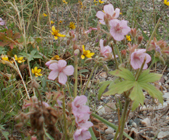
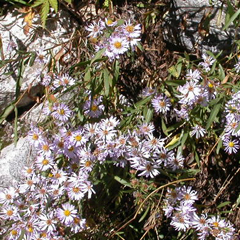
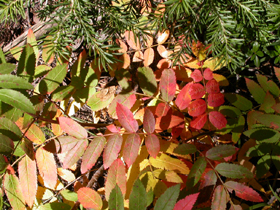
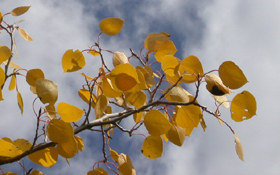
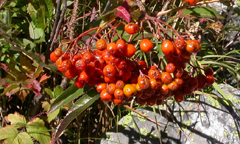
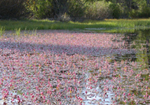
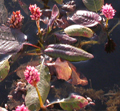 The Lady’s thumb knotweed (an aquatic plant) will be blooming on the edges of some waterways giving the impression, in the early morning low angled light, of a pink mist floating on the water.
The Lady’s thumb knotweed (an aquatic plant) will be blooming on the edges of some waterways giving the impression, in the early morning low angled light, of a pink mist floating on the water.
 Probable sightings of bison, a shaggy, dark brown cow-like mammal, (10 to 12 foot long, 5-6 feet at the shoulder), (larger herds in Yellowstone: summer 2008 estimate of 3,000 in Yellowstone, summer 2009 3,300, winter 2009 2,900);
Probable sightings of bison, a shaggy, dark brown cow-like mammal, (10 to 12 foot long, 5-6 feet at the shoulder), (larger herds in Yellowstone: summer 2008 estimate of 3,000 in Yellowstone, summer 2009 3,300, winter 2009 2,900);
elk (5 feet tall, 9 feet long), (more than 1,254 elk counted in the park in the summer in 2019)
moose (7 feet tall, 9 feet long with 5 feet wide antlers, eat 40 pounds of plants a day).
photo below of a dining moose courtesy of http://rickkonrad.com/
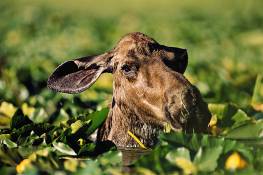
We will mostly see moose wherever they find food. Your first moose sighting could be while hiking, out paddling, or even in a hotel parking lot (when these people got too close) or at a gas station:
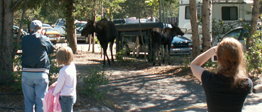
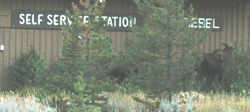
In 1992 estimates had the moose population in excess of 3,500 but the total shrank to around 1,700 by 2003, due perhaps the poor nutrition and predation. A NPS report said, in 2014, “The Wyoming Game and Fish Department makes an annual winter estimate of herd size based on the number of moose counted in aerial surveys. The count for 2014 totaled 241 moose (50 within Grand Teton), producing a Jackson herd estimate of 450 animals. Ratios were estimated at 33 calves and 96 bulls per 100 cows.
On warm days moose will seek relief from the heat, at least deeply shady moist spaces. They can’t tolerate temperatures warmer than 55 to 60 degrees and head into the water to cool down when the temps reach 75 to 80 degrees.
If you have never seen elk or moose before, a size comparison is at Rocky Mountain mammal size comparisons.
Hawk migrations going through (with some Cooper’s, Sharpshinned and Marsh Hawks as well as a few kestrels, merlins or peregrin falcons). Possible sightings of Canada geese “v”s by mid September, great blue herons, osprey (sometimes hover 30-100 feet above water before diving for a fish, then arranges the fish with it’s head pointed forward to reduce resistance while flying; 12 breeding pairs counted in the park in 2019),
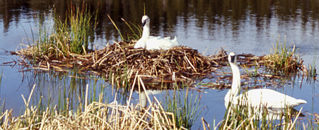
 trumpeter swans (8′ wingspan; mate for life) ( 2023 11 adults in Grand Teton Park, two breeding pairs, two cygnets fledged), American white pelicans (their huge yellow beak and throat pouch distinguish them from swans), peregrine falcons (dive at up to 200 mph and strike prey in mid-air), Bald Eagles, deer, beavers and muskrats.
trumpeter swans (8′ wingspan; mate for life) ( 2023 11 adults in Grand Teton Park, two breeding pairs, two cygnets fledged), American white pelicans (their huge yellow beak and throat pouch distinguish them from swans), peregrine falcons (dive at up to 200 mph and strike prey in mid-air), Bald Eagles, deer, beavers and muskrats.
(12 breeding pairs of Bald Eagles counted in Grand Teton National park in 2019)
Below, NPS photos of adult and juvenile Bald Eagles:
The juvenile Bald Eagle above will not get white head feathers until it is about 4 years old.
When the Bald Eagle was taken off the Endangered Species List on June 28, 2007, there were 12 nests in Grand Teton, 18 on private land in Teton County, six in Bridger-Teton National Forest and one in Bureau of Land Management territory. Most were close to the Snake River. As of 2012 there were 16 nesting bald eagle territories “but not all nests are active and fledge young each year. All territories are monitored for activity by the NPS. Known territories are located along the shorelines of the Snake River, Jackson Lake, and adjacent riparian areas. The park establishes, and enforces a 0.5 mile seasonal area closure from February 15 to August 15 around bald eagle nests to minimize human disturbance. . .”
___________________________________
Grand Teton National Park birds has photos and details about the most common ones we can hope to see
including Bald Eagle, Red-winged Blackbird, Canada Geese, Clark’s Nutcracker, Golden Eagle, Great Blue Heron. Great Gray Owl, Harlequin duck, Loon, Magpie, Merganser, Northern Flicker (woodpecker), Osprey, Ouzel, Pelican, Peregrine Falcon, Ptarmigan, Raven, Sandhill Cranes, Steller’s Jays, Trumpeter Swan , Western Meadowlark, and Western Tanager, with links to calls / songs from most of them to listen to.
and you can Download photos of over a hundred birds of Grand Teton National Park
https://www.audubon.org/climate/national-parks/grand-teton-national-park
___________________________________
![]() We saw 4 to 7 northern river otters while out kayaking in 2002, 2003, 2004 and 2009. One source says they are able to stay underwater for up to eight minutes, another says 2-3 minutes while swimming at 6 miles per hour. Fast humans who can do a 100 meter freestyle in 1 minute are swimming at 3 miles per hour.
We saw 4 to 7 northern river otters while out kayaking in 2002, 2003, 2004 and 2009. One source says they are able to stay underwater for up to eight minutes, another says 2-3 minutes while swimming at 6 miles per hour. Fast humans who can do a 100 meter freestyle in 1 minute are swimming at 3 miles per hour.
From a distance it can be hard to tell which small animal you see swimming. But each swims differently. River otters undulate through the water. When a beaver swims, only his head shows above the water, not his tail; muskrats show both their head and part of their back. Another source says that muskrats usually swim with their thin tails “snaking in the water behind them or arched out of the water; you never see a beaver’s tail as it swims.” Adult muskrats are the size of a football, their body about a foot long, beavers four times as big. Otters are 3 to 4 feet long, minks half that size.
Beavers use their tails as rudders as they swim, to slap the water when they want to warn other beavers they see something dangerous (like you, perhaps) and to help them stand up to reach for and chew branches. Beavers can identify by the sound which member of their family is slapping their tail, and sometime do not react when a young beaver is slapping warnings more often than an adult.
We might see coyotes and will probably hear them if we are out in the morning or evening. On the 2006 trip we heard wolves early one morning, and a few trip particpants have seen wolves in Yellowstone. Coyotes sing in more of a yip, wolves have the deeper howl.

Gray wolves were re-introduced into Yellowstone Park in 1995/6 and spread. In 1997 the first wolves were spotted in Grand Teton. In 1999 the first litter of wolf pups in Grand Teton in over 70 years was born.
A total of eight wolf packs were believed to have used parts of the Teton Valley in 2006. In 2007 four wolf packs had territories that overlapped parts of Grand Teton Park. (Estimates) The Buffalo pack (9 adults, 6 pups) and Huckleberry pack (7 adults, 2 pups) denned in the park. The Teton pack had 3 adults and 5 pups, the Pacific Creek pack had 9 adults and 4 pups. Yellowstone estimated 171 in 2007, 124 in 2008, and 96 to 98 in 2009. In 2008 Grand Teton had 6 packs with 45-50 wolves.
In 2010 five packs likely denned in the Jackson Hole area, including Phantom Springs (9 wolves) and Pacific Creek (12-14) packs in northern Grand Teton National Park and Buffalo (14), Antelope (4) and Pinnacle Peaks (4). A park resource page listed a minimum of 59 wolves in 6 packs in the Jackson Hole area and also listed the further south Phantom Springs pack (9).
A 2011 U.S. Fish and Wildlife Service Wyoming annual report had more details about Yellowstone packs, but listed 38 known wolf packs in Wyoming with 230 wolves and had a map/listings as of December 2011 with Snake River (7), Huckleberry (6), Pacific Creek (12), Phantom Springs (13), Lower Gros Ventre (3 wolves) packs within Grand Teton park.
A 2012 newpaper report quoted Grand Teton park as saying there were “six packs made up of about 50 wolves.”
A 2014 map from a Grand Teton National Park webpage showed home ranges of 6 wolfpacks, all of which were both in the park and in surrounding areas. From the north, going south, they were Snake River, Huckleberry, Phantom Springs, Lower Slide, Lower Gros Ventre and Pinnacle.
The report with the map said, in part: “At the end of 2014, at least 333 wolves in 44 packs (25 breeding pairs) inhabited Wyoming, including Yellowstone National Park . . . Six wolf packs had home ranges that overlapped portions of GRTE (Grand Teton) in 2014. Three of these packs were counted as breeding pairs at year‐end. Within GRTE, the wolf population reached a peak in 2009 – when 76 wolves in 7 packs were documented. Total numbers have declined since then, but the number of packs has remained stable.”
A 2017 Wyoming Game and Fish Department wolf report listed the minimum number of wolves “known to be present on Dec. 31, 2017”, in packs that reside in part or in whole in Grand Teton National Park, including 7 in the Huckleberry Pack (the purple almost circle on the map below to the right of the Teton Range), 5 in Lower Gros Ventre (the light blue colored blob below that), 11 in Pinnacle Peak ( the blue one below the Lower Gros Ventre wolf pack), 8 in Pacific Creek and 8 in Togwotee. 2017 Yellowstone wolf pack minimum size pack totals were 97 and the Wind River Reservation total minimum number of wolves was 12.
238 wolves, in 40 wolf packs, with 19 breeding pairs were known to be in Wyoming. In the map below you can see the wolf packs locations in Grand Teton and Yellowstone parks, as well as adjacent National Forest and private lands in 2017:
2019 (42 wolves counted in the park in 2019) wolf pack territories in Grand Teton:
2021: (At the end of 2021, a minimum of 43 wolves in 6 packs resided in the Jackson Hole area with home ranges in Grand Teton National Park. Jedediah (2 wolves), Horsetail Creek (10), Long Hollow (2), Lower Gros Ventre (13), Pacific Creek (12), and Wildcat Ridge (4) packs all had home ranges that included the park. Lower Gros Ventre (6 pups) and Wildcat Ridge (3 pups) denned in the park, and managers implemented closures around their den and rendezvous sites to minimize human disturbance to wolves raising young. Horsetail Creek (5 pups) and Pacific Creek (5 pups) denned outside the park. )
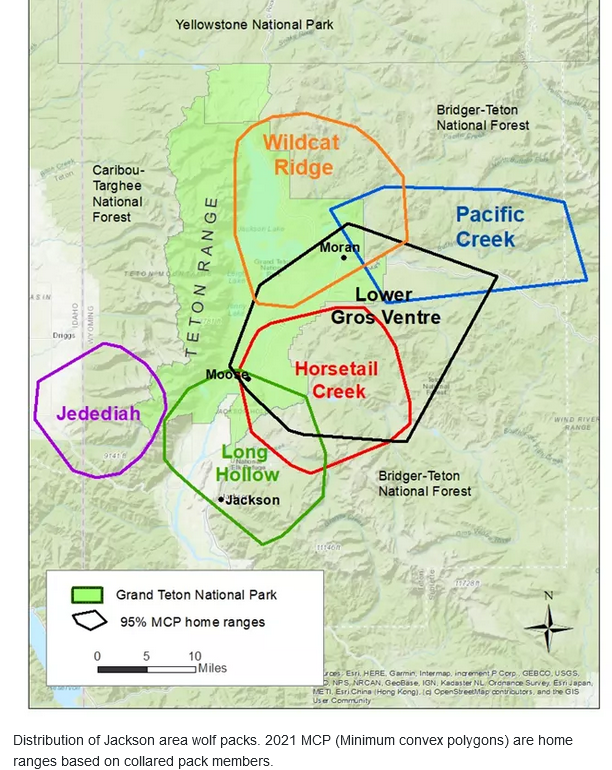
A Grand Teton Park 2023 annual report said there were 40 wolves in five packs in the park.
https://www.nps.gov/grte/upload/Grand-Teton-2023-Annual-Report.pdf
Many years of these wolf pack territories charts, as well as details about wolves, (including why wolves howl and how far away you can hear them) are at:
Wolf pack territories in Grand Teton and Yellowstone National Parks and wolf watching tips
You don’t need to be afraid if you are lucky enough to hear wolves howling or see wolves. In Rocky Mountain Natural History, by Daniel Mathews, we read: “wolves don’t hurt people. I’m not saying never ever not even once, but it’s so rare, we could have fun listing housepets and house hold objects that pose more danger. Um, pit bulls, bobby pins…”
In areas where wolves dominate instead of coyotes, Pronghorn (antelope) fawns are three times more likely to survive, because the wolves favor larger prey.
 Pronghorn (can run 30 mph for 15 miles with spurts up to 70 mph, from the Smithsonian “communicate with each other visually by raising the mane on the back of the neck into a stiff brush and erecting the white hairs on their rump”) are often seen on our trips. 356 in the summer counted in the park in 2019.
Pronghorn (can run 30 mph for 15 miles with spurts up to 70 mph, from the Smithsonian “communicate with each other visually by raising the mane on the back of the neck into a stiff brush and erecting the white hairs on their rump”) are often seen on our trips. 356 in the summer counted in the park in 2019.
The park service notes that
“A pronghorn buck (male) is easily distinguished from a doe (female) by his black cheek patch.”
A 2013 newspaper article said there were about 18 mountain lions and an equal number of cubs in the Jackson area.
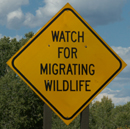
Bears may start digging their winter dens that they will occupy from November +/- (females with cubs earlier than males) until (males) March or (females) April. Bears (black and grizzly) out-of-dens sightings, (with lots of snow), in Grand Teton and Yellowstone have been early to late March (15, 2013 / 8, 2019 / 7, 12 & 22, 2020) to early April (7 & 8, 2019).) They will still be foraging for food to put on their needed fat layer to make it through the over half-year winter. From the Smithsonian “Grizzly bears are omnivorous, consuming everything from mosses, fungi, herbs, grasses, fruits, berries, small vertebrates, insects, birds, and fish—especially salmon during their spawning run.” They will be trying to eat 20,000 calories a day; picture yourself eating 35 Big Macs.

Grizzlies are seen more frequently in the Tetons than in previous years, and not just up in the high mountains, but occasionally down in the flatlands where we camp or cabin overnight and do most of our sightseeing and kayaking. The odds are will not see any, but you must read
your safety in grizzly bear territory. One trip member saw a mom and three young grizzlies on the 2007 trip. Two of us watched a sow for quite awhile on the 2010 trip.
From a 2007 Grand Teton National Park press release:
“Despite the fact that visitors to neighboring Yellowstone National Park have typically had many opportunities to see grizzly bears, the visible presence of grizzlies in Grand Teton National Park has not been as common until recently. Researchers have increasingly radio-collared and tracked grizzly bears in the park since the 1990s. Although some local residents, and park visitors believe there are few if any grizzlies in Jackson Hole, current research indicates that grizzlies can be found anywhere in Grand Teton.”
In 2007 there were 571 grizzlies (estimate) and in 2010, 602 grizzlies (estimate) in the greater Grand Teton / Yellowstone area, about 10 to 15% collared. A Wyoming Game and Fish department report said in Wyoming in 1982 there were 102 and 469 in 2010. A video online at the Grand Teton park page in 2019 said there are 100 black bears and 70 griz in the park.
A 2012 park video said there are usually around 100 black bears and 70 grizzlies in the park.

“In May 2006, a ten-year-old female grizzly bear emerged from her winter den somewhere in the Bridger-Teton Wilderness with three newborn cubs in tow. This bear family living in the heart of Grand Teton National Park has become a highlight attraction for park visitors and local residents alike. Glimpses of the young family bring out cameras, smiles, and exclamations of delight. The female and her offspring serve as one of the most visible examples of grizzly bear recovery efforts that have been underway for several decades throughout the Greater Yellowstone Ecosystem. These bears are also a vivid reminder of the need for park managers, staff, and visitors to be continually vigilant in ensuring conservation of these grizzlies and other park wildlife…”
This next photo is courtesy of Tom Ingram Photography, all rights reserved tomingramphotography
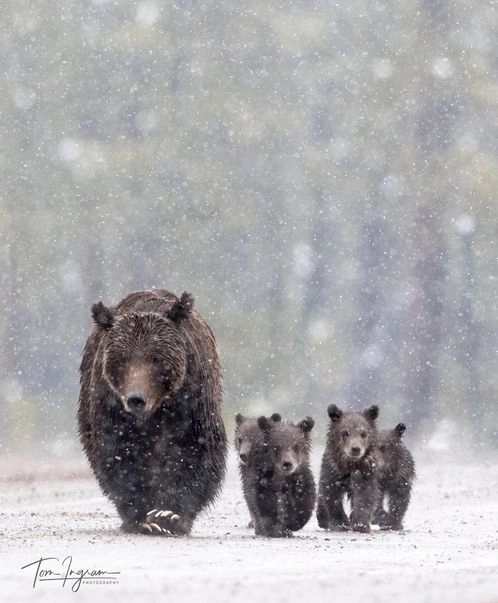
He wrote about taking this photo: “Grizzly 399 is the most famous bear in the world and inhabits Grand Teton National Park and Bridger-Teton National Forest. She surprised everyone in the Spring of 2020 when, at the age of 24, she emerged from her den along Pilgrim Creek with her four cubs. The news got out just days after she was first spotted, and I jumped in my car on a 14-hour drive to go see her. I arrived during a spring snowstorm and was thrilled to have quickly found her. This photo was taken in late May 2020 as she confidently walked toward me on Dump Road. I used a 500mm lens with a 1.4 extender (700mm effective length) while laying on my belly in a puddle of freezing water. I snapped this photo as she approached approximately 120 yards away. This photo was awarded second place in the international “Share the View” competition.”
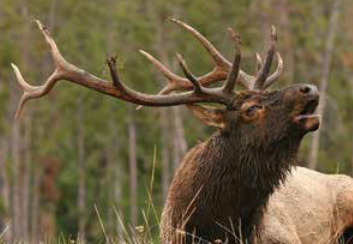
Elk bugling, a low bellow/grunt followed by a higher-note-than-the-first-soprano-Outdoor-Club-faculty-advisor-can-reach whistle that carries a long distance, could be starting.
(The high notes waver around a G three octaves above middle C, and down to a grunt resembling the G an octave and a half below middle C.)
The largest bulls bugle to amass harems of up to 60 cows and the younger ones try to. (From the Smithsonian: Elk “herds can include 200 or more animals. Males and females usually congregate in separate herds until the breeding season, in late September or early October. Then adult males use a variety of ostentatious behaviors to distinguish themselves and compete for access to reproducing females. They use their elaborate six-tined antlers, which may measure nearly 2 m in length along the main shaft, to clash with one another, they call loudly, and they spray urine.”
The Yellowstone Park website said “Bulls bugle to announce their availability and fitness to cows and challenge other bulls. When answered, bulls move towards one another and sometimes engage in battle for access to the cows. They crash their antlers together, push each other intensely, and wrestle for dominance. While loud and extremely strenuous, fights rarely cause serious injury. The weaker bull ultimately gives up and wanders off.”
The Rocky Mountain Elk Foundation describes the sound as a “bellow escalating to [a] squealing whistle ending with [a] grunt.”
In A Field Guide to Mammal Tracks, Olaus Murie described an elk bugle, or as he called it “Wapiti music: … It rises with a glide to a high-pitched silvery note, then glides down again, to end in some guttural grunts.”
In his memoir Teewinot: Climbing and Contemplating the Teton Range, Jack Turner, Exum guide and corporate president writes: “The sound the bull elk makes during the rut is, everyone agrees, difficult to describe. The word bugling leaves too much to the imagination, but attempts to be more specific usually end up being humorous. The early English hunters were particularly eloquent and fanciful. Sir Price said: ‘It is a decided whistle, not unlike a soft note on a clarinet, ending with a very mild sort of grunt at the finish–a most difficult sound to describe, but one which I am happy to say we became very familiar with before the hunt was over. It is the most gentle musical sound that emanates from any animal I ever met with.’
“Not to be outdone, Baillie Grohman said: ‘It is very hard to imitate, or describe. It is neither a whistle or a bellow. Not unlike some tones produced by an Aeolian harp, it might also be compared to the higher notes produced by the flageolet, and of course it is entirely different from the red deer’s call.’
“Olaus Murie’s description in The Elk of North America is, in the best tradition of American pragmatism, more prosaic, but it rings true: ‘The call begins on a low note, glides upward until it reaches high, clear, buglelike notes, which are prolonged, then drops quickly to a grunt, followed by a series of grunts. The call may be very roughly represented thus: A-a-a-a-ai-e-eeeeeeeee-eough! e-uh! e uh!’”
Hear elk bugling.
Please note it is against park regulations to imitate an elk bugle or wolf/coyote howl
or use any artificial or natural audio attractants (including rattling antlers)
to attract or disturb wildlife.
A report from 2014 said the Jackson herd numbered 11,423 elk
Elk graze near the streets of Mammoth and the Albright Visitor Center in Yellowstone. An Oct. 2007 report said that ten cars in Yellowstone had been gored that fall by rutting bull elk who “are prone to take their frustration and hormones out on anything that stands in the way of their cows.” Another report said a bull elk charged a big yellow dump truck. A ranger who works in the fall at keeping people away from the elk said “We try to create as safe of an environment as we can, but we can’t make the park risk free. But every time you get off your sofa, you have an elevated risk.”
photos below of bison, moose and elk courtesy of NPS



To see elk in the spring, summer or fall, don’t head for the National Elk Refuge, at the edge of the town of Jackson. You may have seen pictures of 10,000 plus (one year the estimate was 17,000) animals who are only fed there in the winter from around December to March. (2007-8 winter had roughly 8,000 elk at the refuge of a total of 12,370 in the Jackson elk herd.)

For your safety while wildlife viewing, enjoy viewing them a safe distance away (25 yards at least for most wildlife, and 100 yards for bears, moose, elk, bison and wolves).
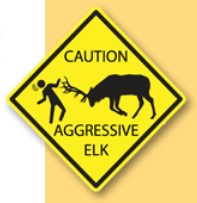
How far is 25 yards? picture two tour bus lengths, four car lengths or six kayak lengths, or the width of the De Anza College swimming pool.
How far away is 100 yards? Picture the length of a football field without the end zones.
You will really want your own binoculars.
and a telephoto lens / tripod for your camera.
The club advisor brings a few pairs of waterproof binoculars, but not enough for each person in a large group. Used pool lane line floats were used to make flotation so the binoculars will not be lost to the bottom of the lake if they fall overboard while out paddling. Below, a pair of binoculars with the floatation clipped on, and a second pair with it not clipped on.

With binoculars you can see the river otters up closer when we are out paddling:
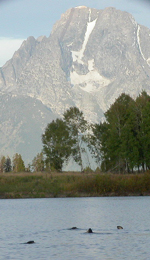
 Was that a black bear or a grizzly,
Was that a black bear or a grizzly,
a coyote or a wolf or a fox we just saw?

Rocky Mountain mammal size comparisons has photos and comparisons of beavers, squirrels, pika, marmot, elk, moose, bison, fox, coyote, wolf, golden-mantled ground squirrel, chipmunk, Red Squirrel (also known as) Chickaree, Unita Ground squirrels, bobcat, lynx, mountain lion (cougar), pine marten, mountain goats, bighorn sheep, pronghorn, grizzly and black bears, as well as tundra swan, trumpeter swan, adult and juvenile Bald Eagles.
Flora and Fauna
Summer trips (late June)
 See the description for fall above, with these notes:
See the description for fall above, with these notes:
The trees and shrubs will be leafed out in their new bright green or dark green. Mid June is the fullest flush of wildflower bloom. June is birthing time for many animals.
Most of the migrating birds will have moved back into the park and will be building nests, sitting on eggs or hatching eggs. (some nesting started as early as March.) As we remind people on our ocean kayak trips, keep the noise down. Any unnecessary expenditure of energy can harm a feeding or nesting bird or animal. Nesting birds may fly away from the nest exposing unprotected eggs and hatchlings to the sun’s heat or predators.
 There will be some kinds of baby ducks and they really do swim behind mom in a line and even try to climb up on her back for a ride.
There will be some kinds of baby ducks and they really do swim behind mom in a line and even try to climb up on her back for a ride.
![]() Trumpeter swans will have cygnets.
Trumpeter swans will have cygnets.
The adult Canada Geese we saw flying in “V”s in fall will still be molting and will be flightless.
Photos of over a hundred birds of Grand teton National park can be seen at:
https://www.audubon.org/climate/national-parks/grand-teton-national-park
By early August most of the bird nesting activity is over. By mid August the Unita ground squirrels go back into their winter burrows for hibernation.
The large hoofed mammals, such as elk, deer, moose, bison and pronghorns, give birth in June and by early July will be letting their babies out of hiding a little more, but they will still be very protective and dangerous. These mammals will have shed their heavy winter coats.
__________________________________________
From the 2024 trip (photo by Thuy Tien Nguyen)
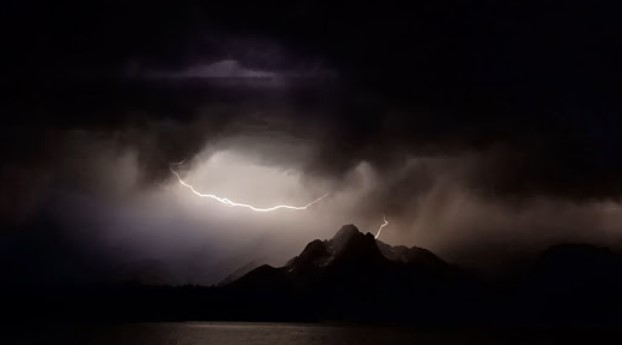
What kind of weather should we plan for?
http://www.mountainweather.com/JACKSON.htm
We usually have some sunny days warm enough to swim in the lakes. It will probably rain part of the trip and we could even a have a light dusting of snow overnight that melts quickly. In 2007 and 2014 we had a couple of huge thunderstorms. It can be cold at night. Grand Tetons Weather has the details.
During a thunderstorm, don’t take a shower or use a sink, including washing dishes. Don’t talk on a land line phone. Don’t use your I pod. Please read Thunderstorm and lightning safety


______________________________
GEAR TO BRING:
You’ll need warm weather gear, including your swim suit, and cold weather gear, especially for early morning paddling and any overnight camping.
Grand Tetons trip equipment has details and advice based on previous trips. It includes this advice: “. . . if you fly to an out of state trip, wear your hiking boots on the flight to save on weight in your luggage AND to be sure your well-broken in, comfy boots actually get to your adventure,”
and a long list of links to info to put on your on your smart-enough-phone to be able to access info more easily, including lightning strikes in the last 24 hours, the app for when Old Faithful in Yellowstone will next erupt, drawing of the Teton range peaks with the names of the peaks, from various locations.
You will really want your own binoculars.
No drones. Use of drones is illegal in National Parks. Animals get aggressive when people fly drones around/over them, endangering everyone in the vicinity. Do not approach people using a drone, but please try to get the vehicle license number (and if possible make, model and color) / campsite number and description of anyone using a drone and report them to Rangers. If you have cell phone coverage, call park dispatch. The phone number for dispatch is usually in the park newspaper you receive when you enter the park. (When people fly drones around forest fires, the helicopters with firefighters and tankers with sprays to put out the fire can’t fly!)
TOTAL COST???
Since different people will have different budgets: drive or fly; some may camp, some may get a hotel room / suite, (most usually get a cheap cabin rather than a hotel room), the trip cost will vary.
Think you can’t afford this trip? Think again, and read Grand Tetons trip cost , it has examples of
The cheap trip,
The not-so cheap trip,
The slightly more costly trip, but less driving time,
also known as the I-can’t-get-much-time-off-work trip,
and The expensive trip.
 photo by Wendy Sato
photo by Wendy Sato
– – – – – – – – – – – – – – – – – – – – – – – – – – – – – – – – – – – – – – – – – – – – – – – – – – – – – – – – – –
To sign up for this trip,
you must first read the sample trip agreement.
and then read HOW TO SIGN UP for the trip includes when/where and things you must bring to an in-person, on campus signup meeting.
August 2 will be the last day to sign up. August 3 is the day we load whichever kayaks/canoe/paddles we need for the trip on the trailer. And it is when we fit trip participants for lifejackets we bring for them.
The trip pages index has a list of, and links to the trip webpages you might have lost track of.
______________________________
photos below by Quang-Tuan Luong/terragalleria.com, all rights reserved.
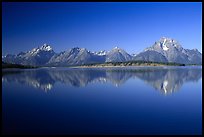
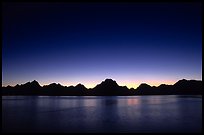
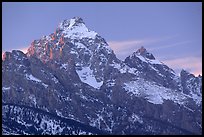

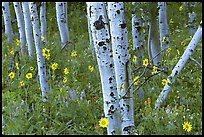
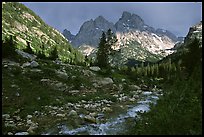
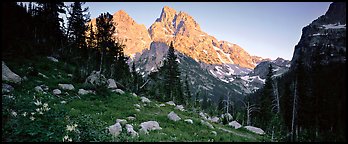
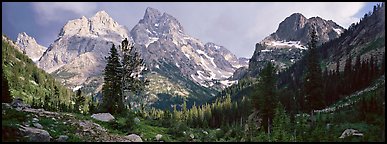
More details, info:
Grand Tetons trip transportation has flight info, driving distances and guesses at gas cost, previous trip examples, AND trip notes with where to find some mega-cheaper gas stations and ways to keep from driving the slow route through towns we need to go through by not taking the obvious freeway exit.
Extend your trip into Canada?, please consult logistics.
St John’s Medical Center hospital in Jackson (24 hour emergency room) is at 625 E. Broadway at Redmond.
tour of the hospital
In an emergency in the park, call 911 as usual. But your cell phone might get to park dispatch/Teton Interagency Dispatch Center faster if you dial
1 (307) 739-3301 (please confirm this number when you get there).
In a not quite emergency, there is a medical clinic on the grounds of Jackson Lake Lodge, near the gas station, ten miles from Colter Bay, open 7 days a week in the summer, usually 9 a.m. to 5 p.m. (307-543-2514, 307-733-8002 after hours). No appointment needed. See the map at: Jackson Lake Lodge vicinity
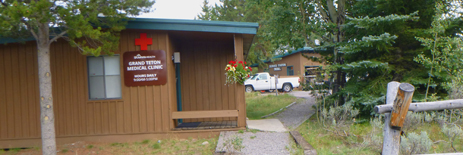
______________________________
Grand Tetons September 2004 has pictures from that trip, including two bull moose head-to-head.
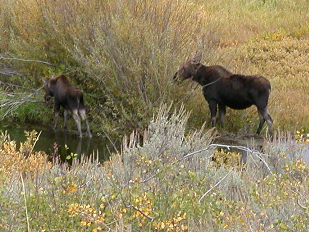
______________________________
Grand Teton and Yellowstone National Park photos
______________________________
The Jackson Hole Chamber of Commerce site is at:
http://www.jacksonholechamber.com/chamber/index.php
Another big site of info is at:
http://www.jacksonholenet.com/
and yet another is at:
http://www.jacksonholewy.net/
Be careful if you request info from these as some require that you give them your email address and they will give it out to lots of their advertisers.
______________________________
The Jackson Hole News and Guide (newspaper site) is:
https://www.jhnewsandguide.com/
We found Wyoming public radio with the usual Morning Edition, All Things Considered, BBC Newshour, Fresh Air and late evening classical music or jazz at 90.3 (Jackson) and 91.3 (Dubois).
![]()
Black and white aerial photo/maps are at:
Colter Bay, Grand Teton National Park

A list of books you can download for free and read in advance of a Yellowstone or Grand Teton visit are at Recommended Reading
photos below used with permission from Ron Niebrugge: http://www.wildnatureimages.com/
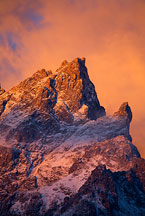
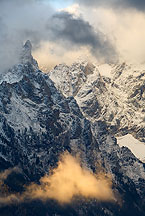
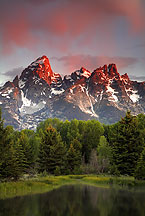
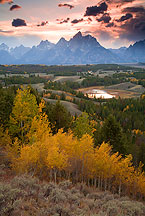
My page of: Grand Tetons recommended reading
includes links to on-line bird and mammal field guides and The Journals of Lewis and Clark
Clark: “…bison were so numerous and loud that the men had difficulty sleeping.”
Worth reading: the wildife section at: http://www.nps.gov/yell/planyourvisit/resourceandissues.htm
LIVE WEBCAMS:
Grand Teton and Yellowstone webcams with links is at:
https://www.jacksonholenet.com/media/
Also try: https://www.seejh.com/live?region=grand-teton
https://www.seejh.com/live?region=jackson
One of these should have a live shot of Old Faithful geyser (in Yellowstone).
Old Faithfull erupts on an average of every 79 minutes, with a huge jet of hot water up to 204 ° F and up to 180 feet high.
__________________________________________
Was that shaking an earthquake? Intermountain west earthquakes, including
Montana, Idaho, Wyoming, Nevada, Utah, Colorado, Arizona and New Mexico, are monitored, with a map of recent earthquakes in the last 2 hours, last 2 days, last week, with locations, magnitude, times of occurrence, at
https://quake.utah.edu/earthquake-center/quake-map
__________________________________________
The trip is open only to De Anza students/staff. Answers to most questions about how the club works are at: Outdoor Club Basic Info The main rules common to most of our trips, including who is eligible to go, are at: Outdoor Club trip rules.
For details about club events and on how to find us to pay for a membership, sign up for events or volunteer, go to:
Outdoor Club Coming Attractions
We can expect sunny days and rain, or possibly even a little overnight snow. Interesting weather does not cancel club events. Club activity areas, and all park restrooms or other buildings are non-smoking. Even though there is smoking allowed in Wyoming restaurants, all National Park restaurants, etc. are non-smoking. No alcohol or drug use is allowed before or during club activities. This is not just a rule written to make the College happy, it is a trip rule.
The trip will only be an official club event while we are kayaking (or canoeing), and possibly a hike or some other sightseeing or a group meal at a restaurant.
How you get to Grand Teton National Park, where you stay overnight, most meals, most sightseeing, any bike riding, whitewater rafting or horseback riding, going to a movie in town, etc. will not be official club business.
The faculty advisor must be along for all kayak/canoe use, and all safety recommendations by the advisor, park and De Anza rules must be followed.
– – – – – – – – – – – – – – – – – – – – – – – – – – – – – – – – – – – – – – – – – – – – – – – – – – – – – – – – – –
![]()
You don’t need to hike a long way to see these sights:
Photo below by Fred Hanselmann http://www.hanselmannphotography.com/Pictures_of_the_tetons.html)
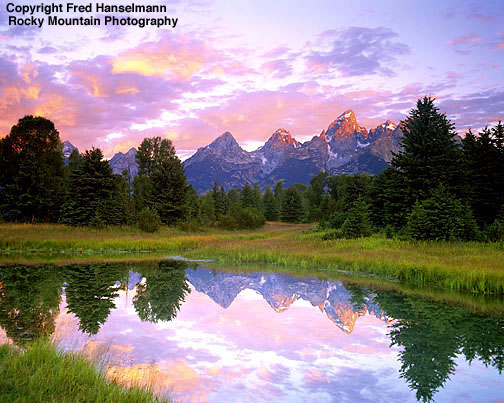
This next photo is courtesy of Tom Ingram Photography, all rights reserved tomingramphotography
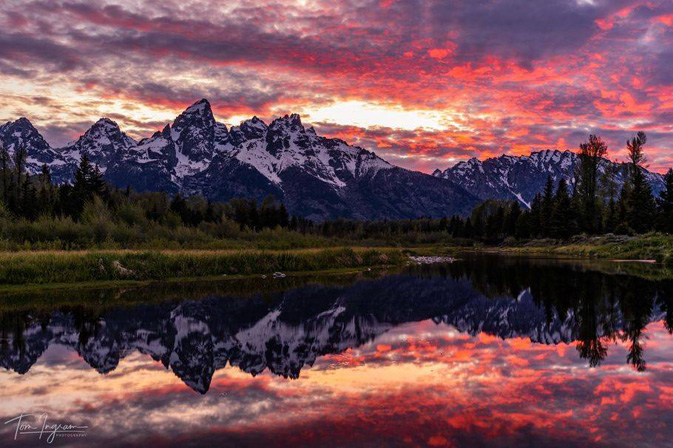
Pictures from the total Solar Eclipse 2017 trip are at: Total Solar Eclipse in Grand Teton National Park
Grand Teton trip 2014 video by Jennifer Chiou
https://www.youtube.com/watch?v=uXiHRYdgo7Q
The author of this webpage, (written for my students), does not give any warranty, expressed or implied, nor assume any legal liability or responsibility for the accuracy, completeness, or usefulness of any information, product, or process included in this website or at websites linked to or from it. Users of information from this website assume all liability arising from such use.
